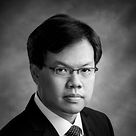Topics for the future
Intelligent construction and digitalisation are the topics which will shape the building envelope industry in future. It is therefore important to address these issues during the early development stages.

PROFILE: What is your definition of an intelligent façade?
Timothy Soebroto: Generally, an intelligent façade is one that incorporates a variety of mechanisms which enable it to respond to different conditions which may be contradictory – for instance, the thermal performance of the façade in comparison to daylight or fresh ventilation in comparison to acoustics – in order to create the desired ambient air quality depending on the behaviour of the users of the building and its location. This requires automatic control to provide a balance between the interior air quality and energy efficiency. Due to the way it can adapt to its surroundings, an intelligent façade can also be called an adaptable façade.
PROFILE: What is your vision for the building envelope of the future?
Timothy Soebroto: The future of the building envelope is its efficiency. The first aspect is energy efficiency. The main aim of a building envelope is to meet the human requirements for indoor comfort, which involves technology and a high level of energy. There are two ways to achieve energy efficiency. One option is to use highly insulating materials and systems which have a lower level of thermal conductivity than current products. The other way is by designing a building envelope which responds to the external environmental influences and the user requirements on the inside, so as to attain a balance between energy consumption and user comfort. The second aspect is material efficiency. The aim must be to reduce material consumption in the building envelope. One possible solution for achieving or improving material efficiency is to use digitalisation, and not just in the planning stage but throughout the entire process, from concept planning through to production and operation.
PROFILE: What new requirements are there?
Timothy Soebroto: Project requirements are constantly evolving, as they come from the building users who are themselves evolving too. The users of the building require a better or more comfortable indoor climate, while the clients demand buildings with improved energy efficiency, in order to have more costeffective buildings not only during the operational phase but also during the construction phase. The competition on the market for commercial buildings also has an effect on the development of requirements placed on buildings.
PROFILE: How will digitalisation continue to have an impact on architecture?
Timothy Soebroto: Digitalisation makes everything that was impossible in the past now possible. Not only does it improve the productivity of construction industry players, it also opens up new opportunities for designers to tackle projects which previously could not be implemented. From the designer‘s point of view, digitalisation allows them to create the most intricate designs and find the best way to make them happen in the shortest time possible.
PROFILE: Do you use digital tools and methods such as BIM at your practice?
Timothy Soebroto: Yes, we do, particularly for façades with complex geometries which require a high level of precision and accuracy that cannot be achieved using manual tools and methods.
Photo: Meinhardt Façade Technology